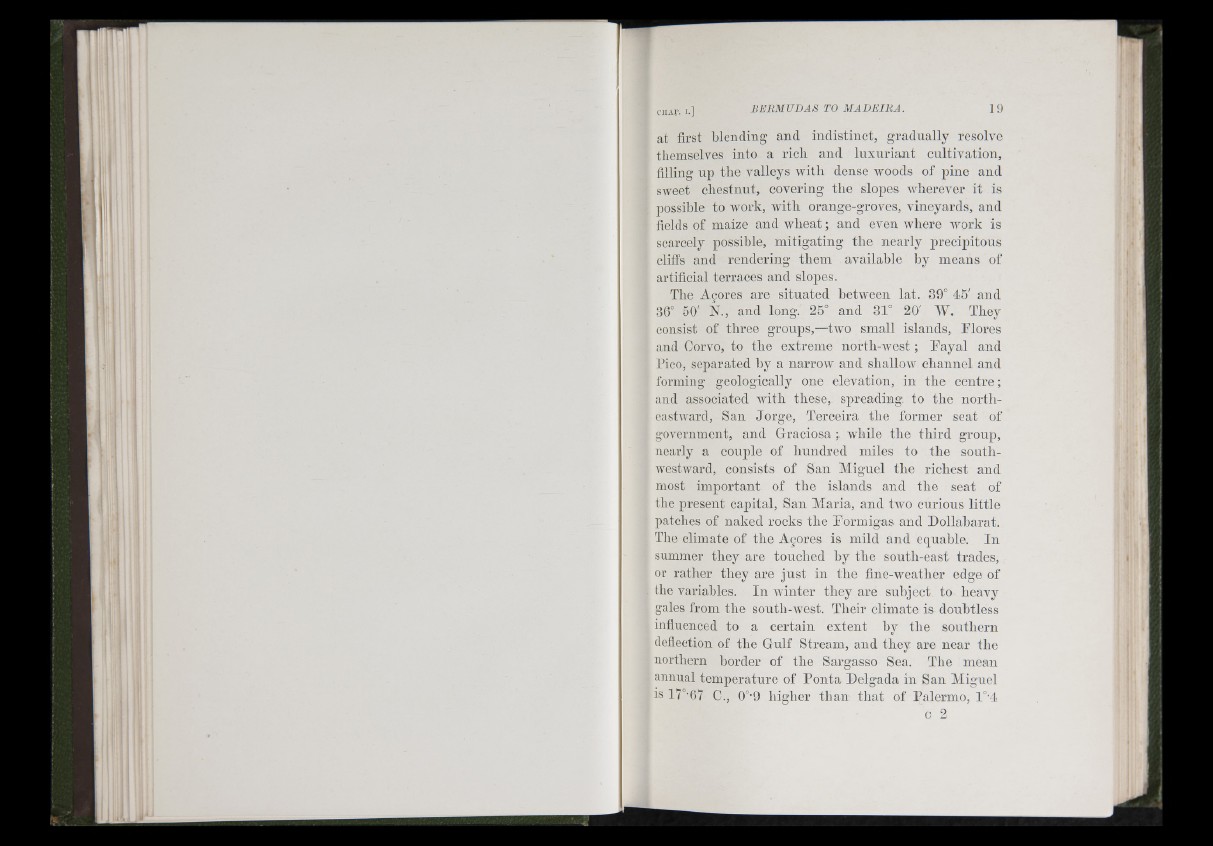
at first filending and indistinct, gradually resoHe
themselves into a rich and lu x u rian t cultivation,
filling up the valleys with dense woods of pine and
SAveet chestnut, covering the slopes Avlierever it is
possible to Avork, with orange-groves, vineyards, and
fields of maize and wheat ; and even AAdiere Avork is
scarcely possible, mitigating the nearly precipitous
cliffs and rendering them available by means of
artificial terraces and slopes.
The Açores are situated between lat. 39° 45' and
36° 50' N., and long. 25° and 31° 20' W. They
consist of three groups,—two small islands, Flores
and Corvo, to the extreme north-Avest ; Fayal and
Pico, separated hy a narroAv and shalloAv channel and
forming geologically one elevation, in the centre ;
and associated AAdth these, spreading to the north-
eastAvard, San Jorge, Terceira the former seat of
gOA'ernmont, and Graciosa ; while the third, group,
nearly a couple of hundred miles to the soath-
AA^estAvard, consists of San Miguel the richest and
most important of the islands and the seat of
the present capital, San Maria, and tAVO curious little
patches of naked rocks the Formigas and Dollaharat.
The climate of the Açores is mild and equable. In
summer they are touched by the south-east trades,
or rather they are ju s t in the fine-weather edge of
the variables. In Avinter they are subject to heavy
gales from the south-Avest. Their climate is doubtless
influenced to a certain extent hve/ the southern
deflection of the Gulf Stream, and they are near the
northern border of the Sargasso Sea. The mean
annual temperature of Ponta Delgada in San Miguel
is l7°-67 C., 0°'9 higher than that of Palermo, l°-4
c 2